
Africa's cats, from big to small


Africa is synonymous with its majestic big cats, but the continent is also home to a host of lesser-known felines (Felidae). The big cats of Africa need no introduction and are the highlight of any African safari. But there are seven other African cat species that call the continent home. Most of these are small, secretive and seldom seen, even by the researchers attempting to learn more about their behaviour and ecology. They may not be as well-known as the big cats, or indeed as easy to see, but these medium-sized and small cats are equally beguiling. They also face the same threats – habitat loss, deforestation, bushmeat poaching and indiscriminate snaring: sweeping threats to wildlife regardless of size.
These are the ten African cat species (as recognised by the Cat Classification Task Force of the IUCN’s Cat Specialist Group):
Big African cat species
1. African lion – Panthera leo
The largest of our cat species and the second largest in the world, these iconic big cats are the apex predators in all of the African wilderness areas in which they occur. They are also the only true social African cat species (and in the world, in fact!), and one of the most sought-after species on any African safari.
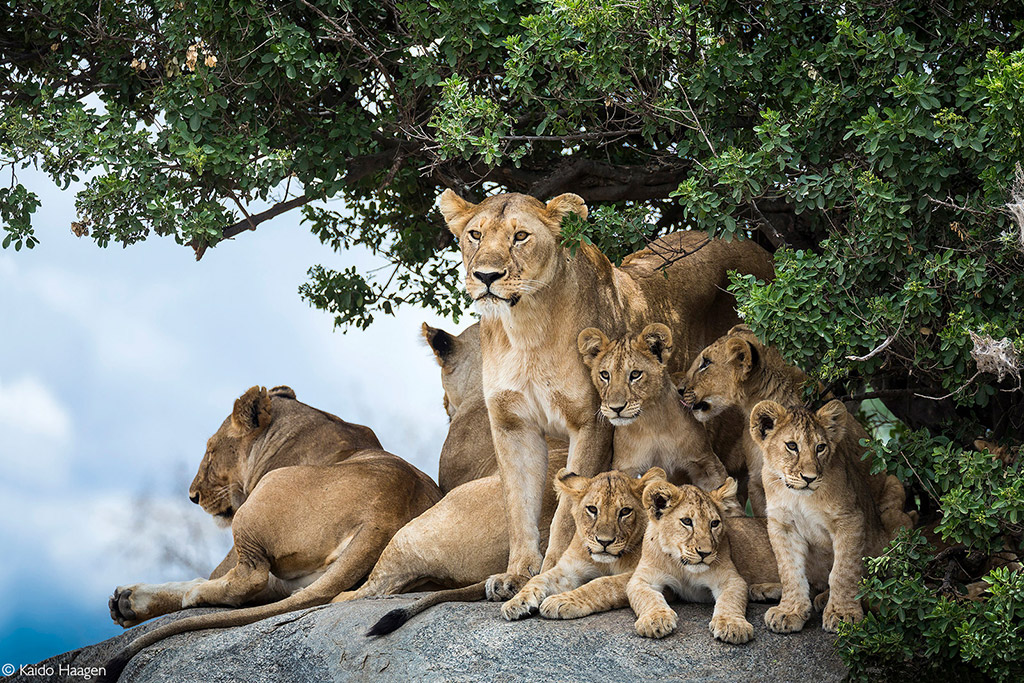
In 2025, the IUCN assessed their population as ranging from 22,000 and 25,000 individuals, but some assessments from Panthera and other conservation organisations suggest that there may be fewer than 20,000 wild lions in Africa. Lions are classified as ‘Vulnerable’ on the IUCN Red List.

There are two recognised subspecies of African lion: P. l. leo (northern lion), which occurs across Africa and India, and P. l. melanochaita (southern lion), found in eastern and southern Africa. There are plenty of safari destinations where it is easy to spot wild lions, including the Maasai Mara National Reserve in Kenya, Tanzania’s Serengeti National Park, Khwai in Botswana, Greater Kruger in South Africa and Zambia’s Luangwa Valley (North Luangwa and South Luangwa). Check out our story on the best spots to see wild lions, linked at the bottom of this article.
 Keen to spot big cats in the wild? We have ready-made safaris to choose from, or ask us to build one just for you.
Keen to spot big cats in the wild? We have ready-made safaris to choose from, or ask us to build one just for you.
2. African leopard – Panthera pardus pardus
Secretive yet highly adaptable, the exquisite aesthetic and graceful power of African leopards make them a firm favourite for safari-goers. Their rosetted coats provide perfect camouflage, allowing them to be extremely successful ambush predators, but their light-footed approach to stealth belies their sheer strength. Where necessary, leopards can lift kills over twice their body weight metres high into suitable trees.

Though the African leopard was confirmed as a subspecies by the Cat Classification Task Force of the IUCN’s Cat Specialist Group in 2017, leopards from Africa and across Asia are considered to be the same species (with nine subspecies), meaning that they have the most extensive distribution range of any of the big cats. Of the nine recognised leopard subspecies worldwide, P. p. pardus is the only one found in Africa, ranging from sub-Saharan regions to parts of North Africa. Due to their secretive, solitary nature, there are no accurate estimates of how many leopards remain in the wild. Leopards are classified as ‘Vulnerable’ on the IUCN Red List. Leopards can be seen across Africa, but there are a few places that offer truly epic leopard sightings, including Laikipia in Kenya, Greater Kruger in South Africa, Tuli Block in Botswana, and Moremi Game Reserve in Botswana.


3. Cheetah – Acinonyx jubatus
Fleet-of-foot yet slight and retiring, the cheetah is something of an odd one out. As the fastest land mammal in the world, it also boasts the highest hunting success rate of the big cats, but is constantly harassed by other larger predators and regularly loses its hard-won meals. Cheetahs hunt mainly during the day to reduce competition with the nocturnal predators, hence the characteristic “tear marks” that run from the corners of the eyes to the mouth, which help to reduce the glare from the sun. Five subspecies of cheetah are recognised, two of which occur in Africa: A. j. jubatus across southern and eastern Africa, and the critically endangered A. j. soemmeringii in the Horn of Africa.
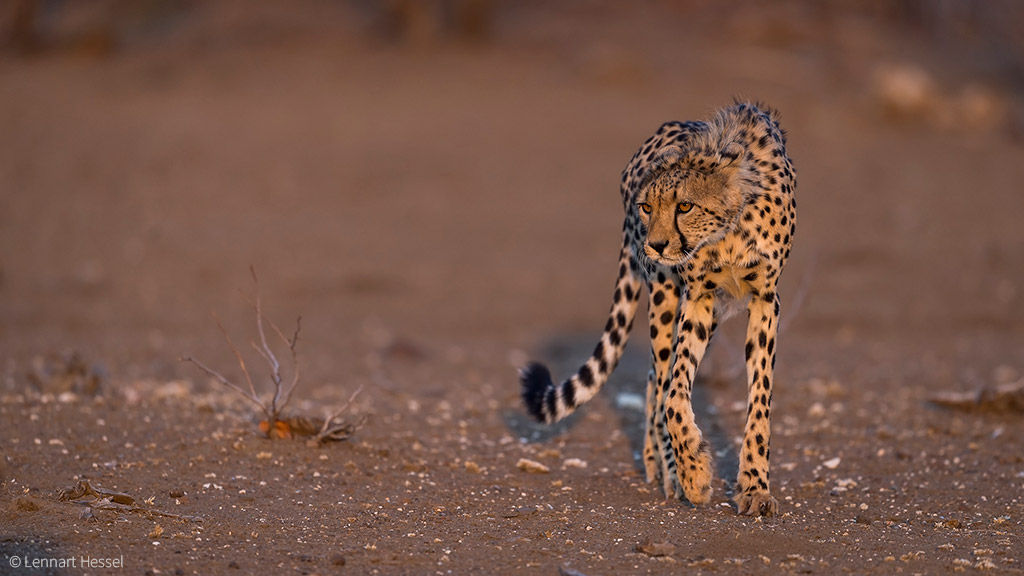
There are believed to be less than 7,000 cheetahs left in the wild (6.517 as assessed by IUCN in 2021), and the individuals that do remain have been observed to have unusually low genetic variability. Cheetahs are classified as ‘Vulnerable’ on the IUCN Red List. Cheetahs are regularly spotted in the Serengeti in Tanzania, Maasai Mara in Kenya, and Kgalagadi Transfrontier Park in South Africa and Botswana.
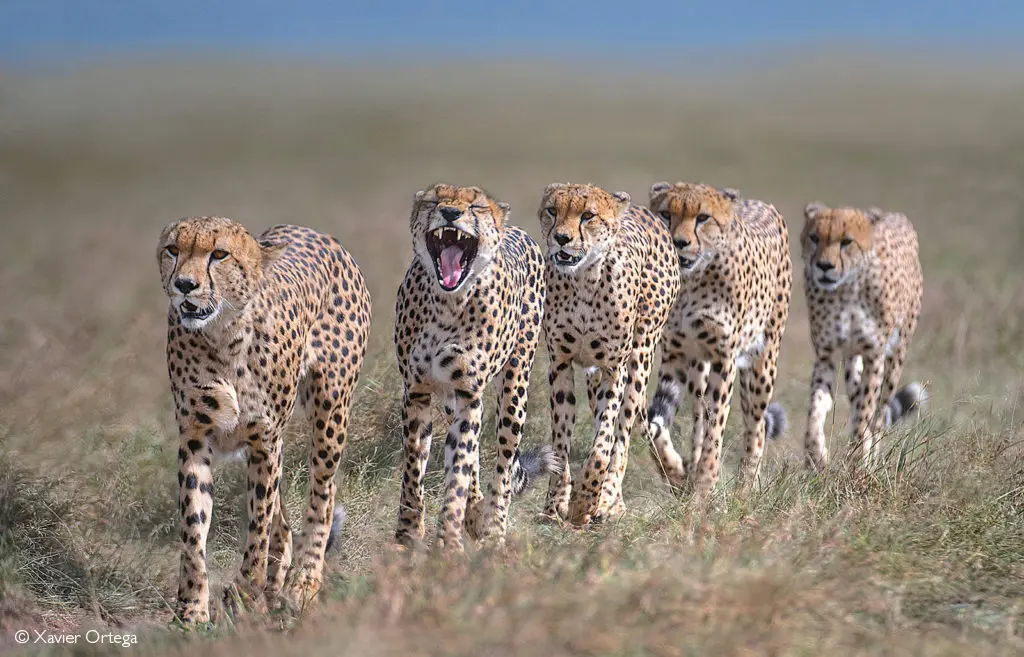
Medium-sized African cat species
4. Serval – Leptailurus serval
The serval is the only member of its genus and bears only a passing resemblance to a cheetah, despite regularly being mistaken for one thanks to their spotted coat and similar colouration. They are far smaller than cheetahs – weighing at most 18kg (large cheetahs have been recorded weighing up to 70kg). Their legs are very long, yet their tails appear almost disproportionately short, and their large ears are used to pinpoint the smallest rustles of rodents in the long grass. A hunting serval that has detected the sounds of rodents or other available prey remains motionless before launching upwards to heights of more than 2m and covering distances of over 3.5m.
The population of this inconspicuous cat is unknown, but their numbers are believed to be stable, and the IUCN Red List classifies them as being of ‘Least Concern’. Three subspecies of serval are currently recognised: L. s. serval in southern Africa, L. s. constantina in West Africa, and L. s. lipostictus in East Africa. Servals can sometimes be observed in South Africa’s Greater Kruger, Zambia’s South Luangwa National Park and Tanzania’s Ngorongoro Crater.

5. Caracal – Caracal caracal
Slightly shorter and stockier than the sympatric serval, the caracal has something particularly regal about it. This look is complemented by the long tufts of fur extending from the tips of their ears. These reddish cats survive off small mammals and rodents but have been known to tackle larger prey such as young antelope. They are expert jumpers and have been recorded leaping up to 3 metres to grab birds mid-flight.
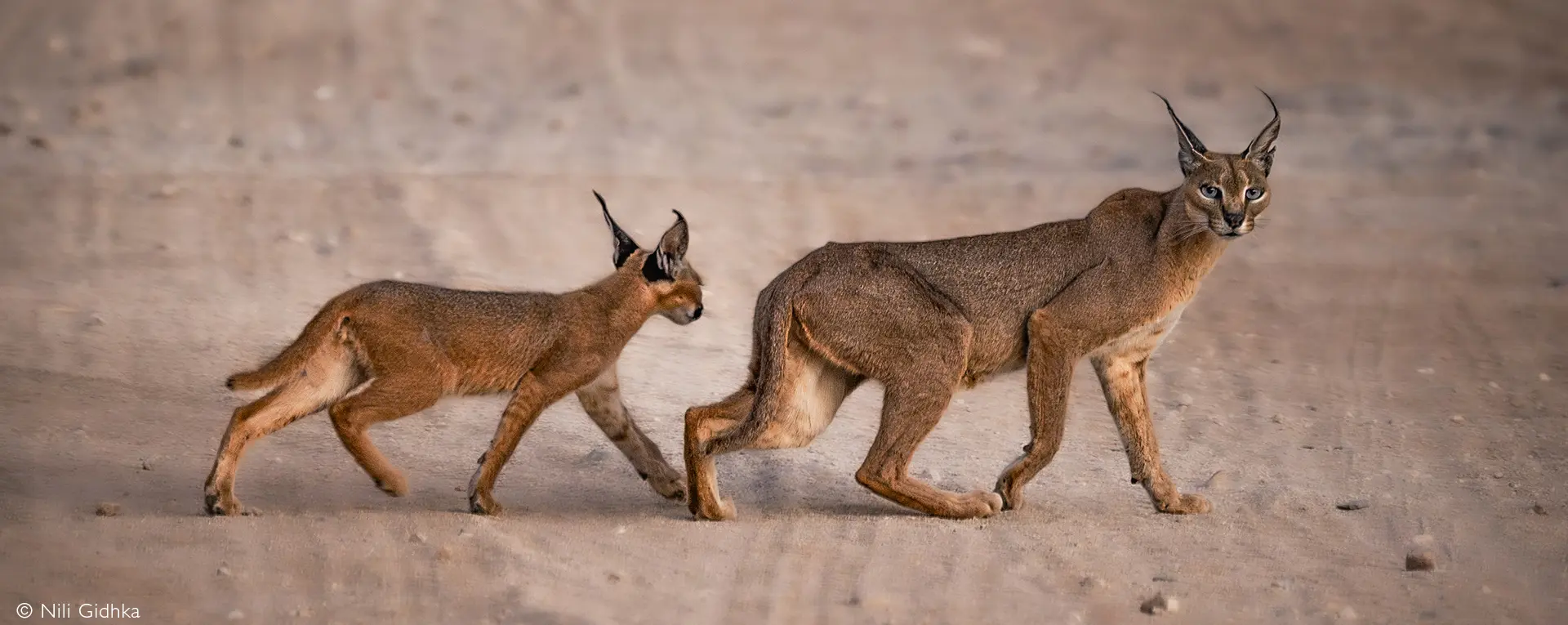

Their exact numbers in the wild are unknown, and they are classified as ‘Least Concern’ on the IUCN Red List. However, in many parts of its range, it is considered rare or endangered.
Three caracal subspecies are recognised, with two occurring in Africa: C. c. caracal in southern and eastern Africa and C. c. nubicus in North Africa.
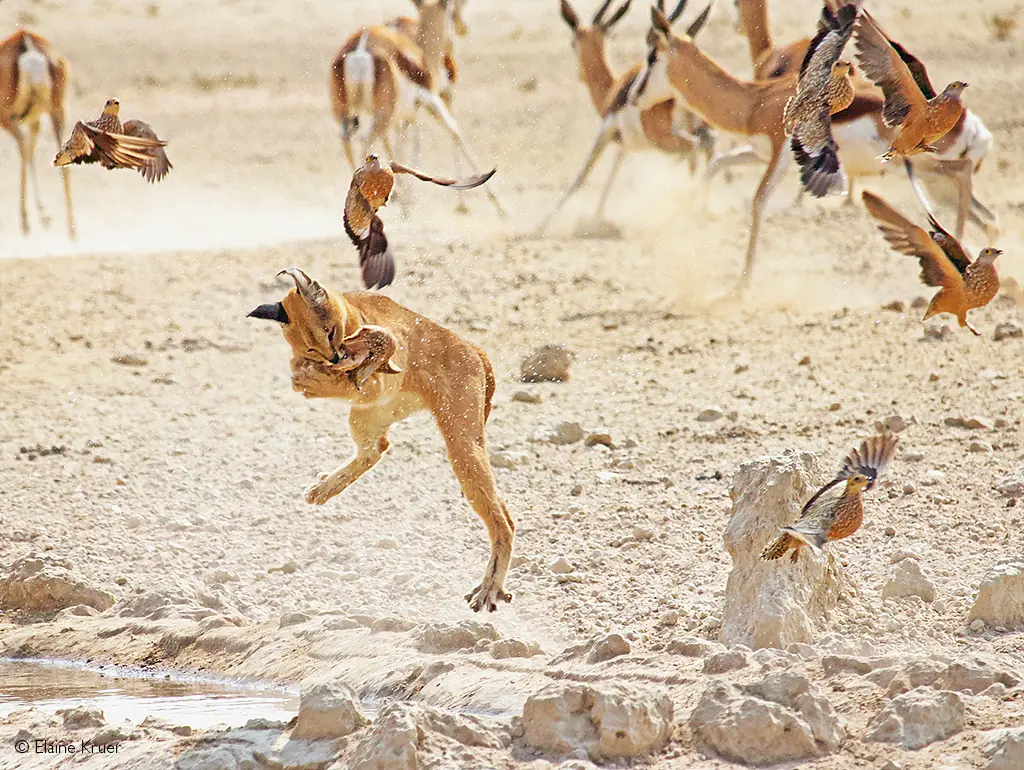
Caracals are elusive but may be glimpsed in Namibia’s Etosha National Park, South Africa’s Kalahari regions, and Botswana’s Central Kalahari Game Reserve, among others.
6. African golden cat – Caracal aurata
Few people are even aware of the existence of the African golden cat, and far fewer have had the good fortune to see one in the wild. This shy and secretive cat is endemic to the rainforests of West and Central Africa, and researchers are working hard to supplement the scant information available on its behaviour, distribution and ecology. Camera trap footage has been essential in capturing snippets of information about the golden cat.
Genetic analysis shows that it is closely related to the caracal, and the two species do share a similar look, though the golden cat lacks the characteristic black ear tufts. While it is believed to be locally common in certain parts of Gabon and Uganda, this attractive cat is threatened by habitat loss from deforestation and bushmeat hunting. It is classified as ‘Vulnerable’ on the IUCN Red List.
Two subspecies are recognised: C. a. aurata found in West Africa and C. a. celidogaster occurring in Central Africa. African golden cats are rarely seen, but sightings have been recorded in Gabon’s Lopé National Park and Uganda’s Kibale National Park.
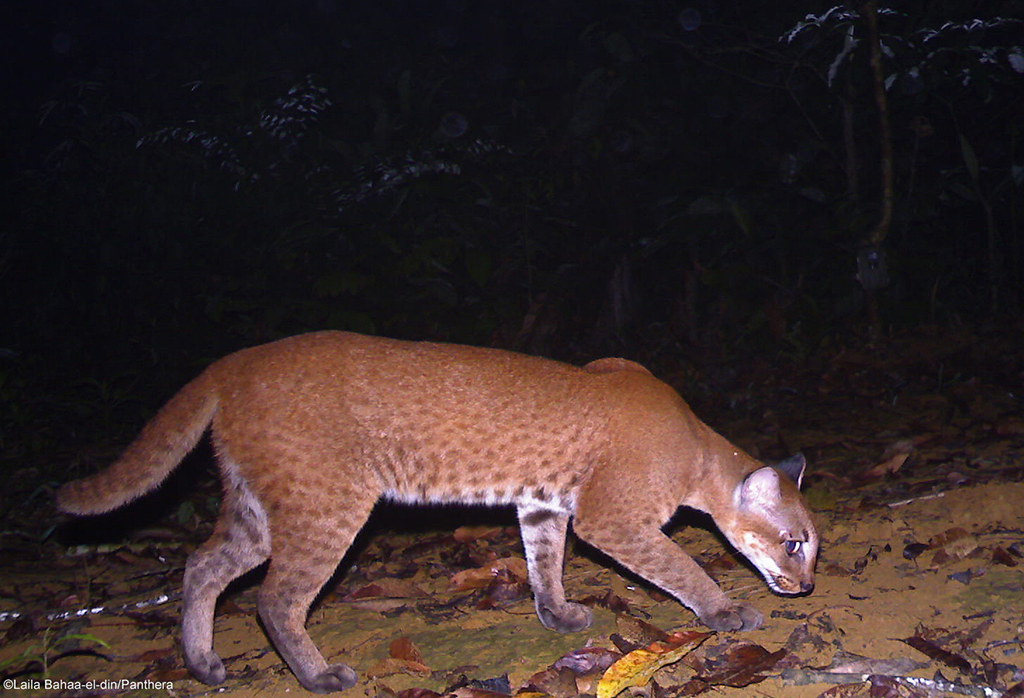

The small African cat species
7. Jungle Cat – Felis chaus
Also known as the “swamp” or “reed” cat, this small felid is widespread throughout much of the Middle East, South and Southeast Asia, but in Africa is found only in wetter regions of Egypt. Ten subspecies of jungle cat are recognised, but only F. c. nilotica occurs in Africa, limited to Egypt’s Nile Delta region. This wetland-dwelling cat prefers dense ground cover and hunts small rodents and birds. It is listed as ‘Least Concern’ on the IUCN Red List. In Africa, jungle cats can occasionally be spotted by avid seekers along the Nile Delta wetlands in Egypt.

8. African wildcat – Felis lybica
The ancestor of the domestic cat, these cats are often mistaken for their domestic cousins. However, African wildcats can be distinguished (occasionally with difficulty) by their slightly longer, banded legs and reddish ear colouration. This genetic closeness is one of the greatest threats to African wildcat populations, as interbreeding with domestic cats is common, leading to significant genetic pollution.
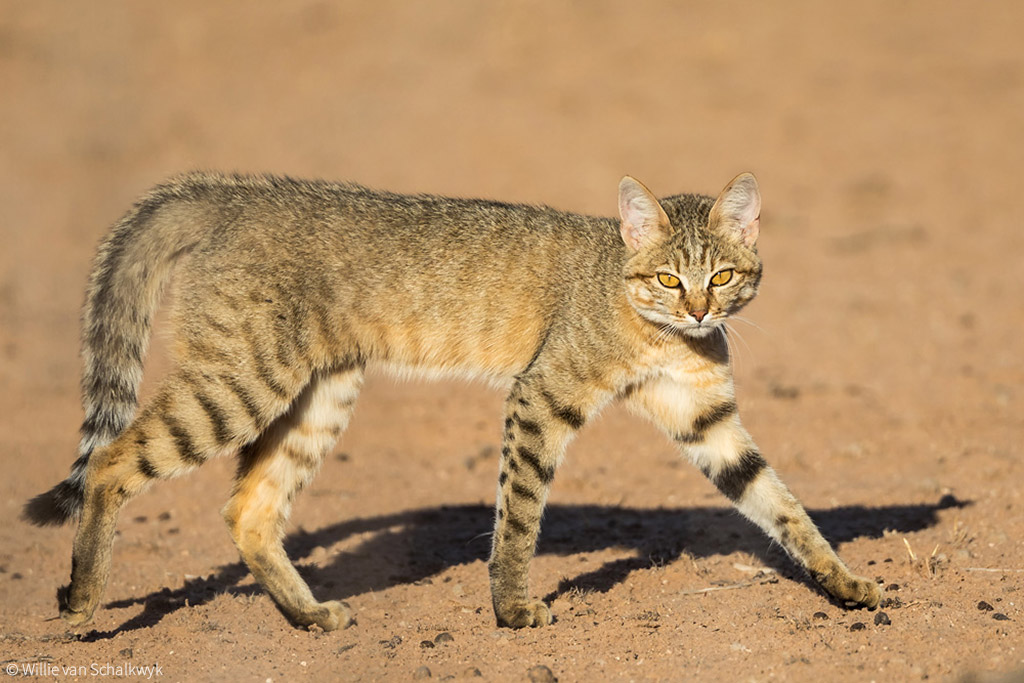
The African wildcat has only recently been recognised as being a distinct species – it was initially considered a subspecies of Felis silvestris (European wildcat), and the IUCN Red List still lists it under Felis silvestris lybica as ‘Least Concern’, though future updates may revise this. The species African wildcat has actually been divided into three subspecies: F. l. lybica across northern Africa, F. l. cafra in southern and eastern Africa, and F. l. ornata in Asia.
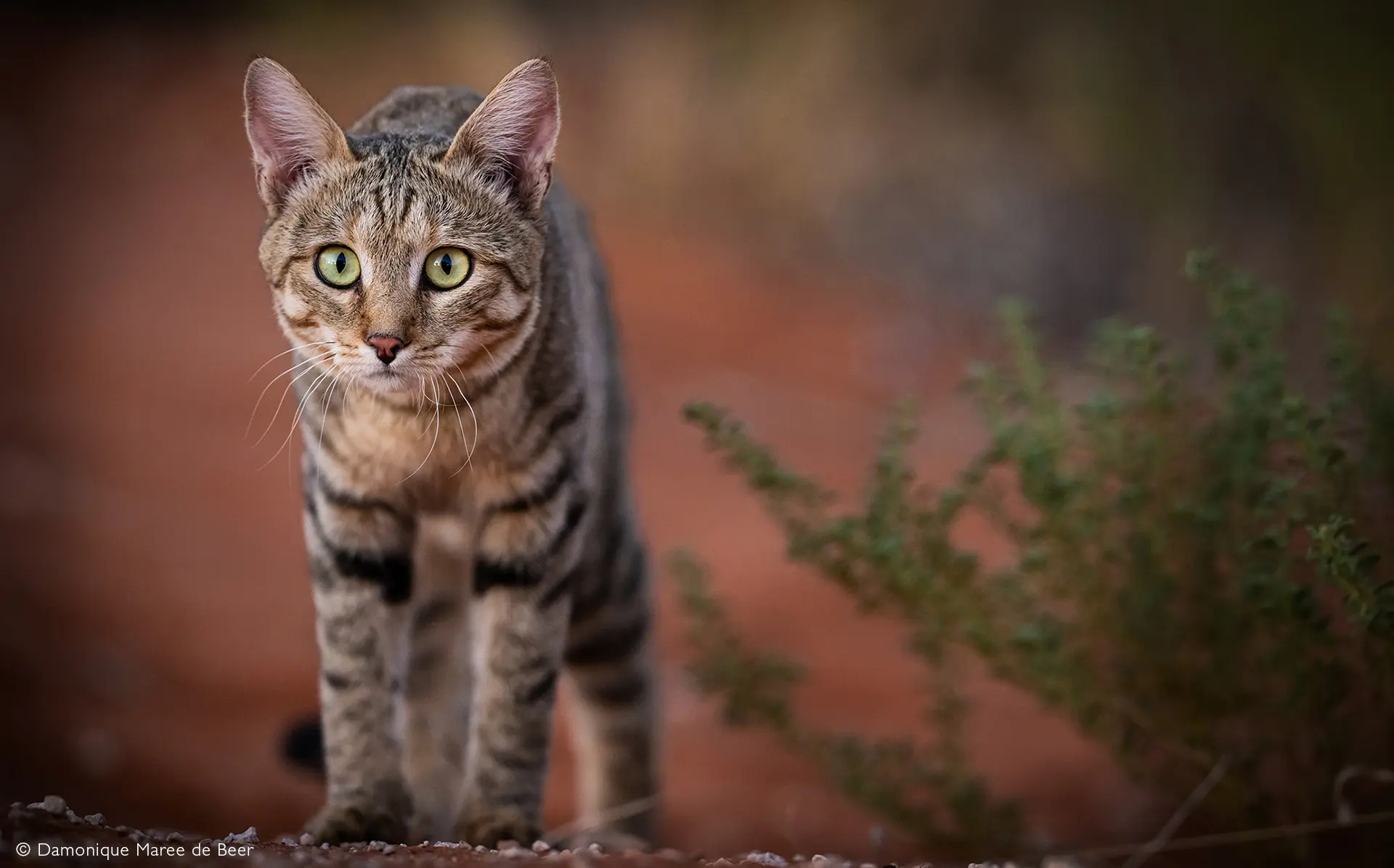
African wildcats may be spotted in Namibia’s Kalahari regions, and all across South Africa’s savannah areas, among others. Keep an eye out for them on guided night game drives in Greater Kruger.
9. Sand cat – Felis margarita
This tiny desert-dwelling cat is well adapted to handle the extremes of its desert habitat, both in terms of a lack of water and extreme temperature fluctuations. Four subspecies of sand cat are recognised. The African subspecies F. m. margarita is slightly smaller and more yellow than the Asian subspecies, and occurs in North Africa’s Sahara Desert regions. Interestingly, its ear canal is about twice the size of a domestic cat’s, and its hearing is roughly five times more acute.
Though considered to be of Least Concern in terms of conservation status, these cats are secretive and hard to find. Rare images of sand cat kittens can be viewed here. Sand cats inhabit desert areas and are occasionally seen by research teams seeking them out in the Sahara regions. However, they are very tricky to spot, due to their elusive nature, ability to disappear without a trace and perfect camouflage.

10. Black-footed cat – Felis nigripes
Also known as the “small-spotted cat”, the black-footed cat is the smallest of all of the African cat species and is endemic to the southwestern areas of Southern Africa. They may be tricky to spot when on your African safari, as they are extremely elusive. These tiny cats weigh less than 2kg on average but are reputed to be the most successful hunters of all the cat species.
While it is difficult for researchers to estimate the number of black-footed cats in the wild, they believe that there are less than 10,000 mature individuals and that the population is declining. For these reasons, the black-footed cat is listed as ‘Vulnerable’ on the IUCN Red List. No subspecies are recognised; Felis nigripes is a monotypic species endemic to southern Africa. While evasive and rare, black-footed cats are sometimes seen in southwestern Africa, including Southern Africa’s Kalahari and Richtersveld regions, and Namibia’s Namib Desert.
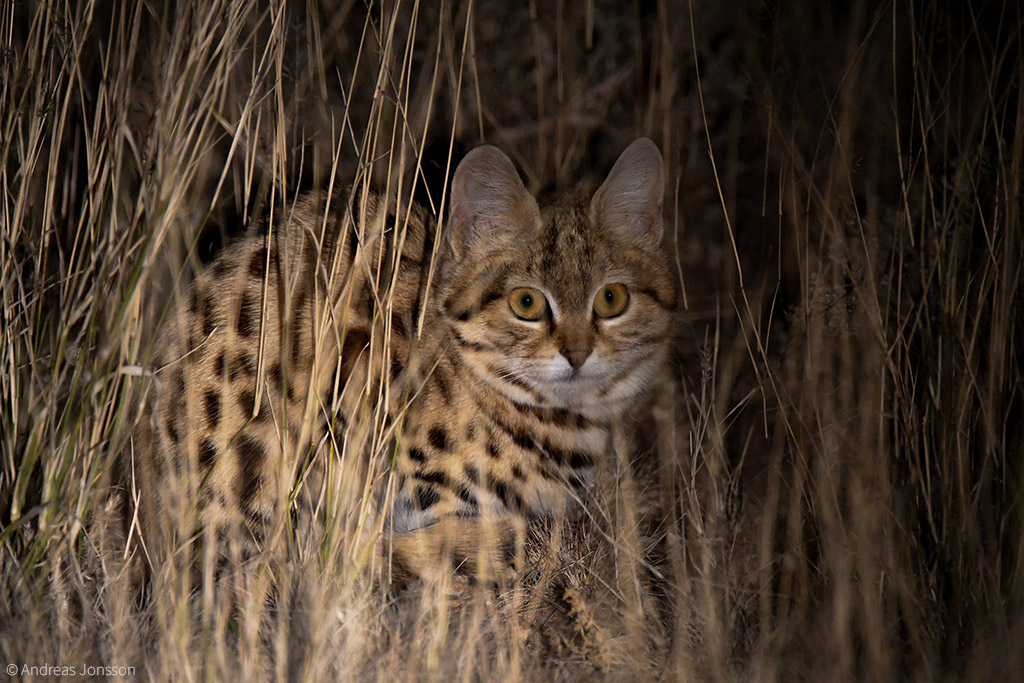
Supporting big cat conservation in Africa
Are you keen to support big cat conservation in Africa? You can help save leopards by supporting our Spots on the Line campaign, and you can contribute to the conservation of lions through our Collar a Lion campaign.
Further reading on African cat species
- Want to spot leopards on your next safari? Here are the top destinations for seeing this elusive member of the Big 5
- For the best chance of seeing lions in the wild, head to one of Africa’s top lion hotspots – as recommended by AG safari experts. Here are the best places to see wild lions in Africa
- Explore Africa’s big cats – lion, leopard, & cheetah – through stunning photos & fascinating facts about their habitats, behaviours, & traits. Celebrate Africa’s big cats here
To comment on this story: Login (or sign up) to our app here - it's a troll-free safe place 🙂.![]()




